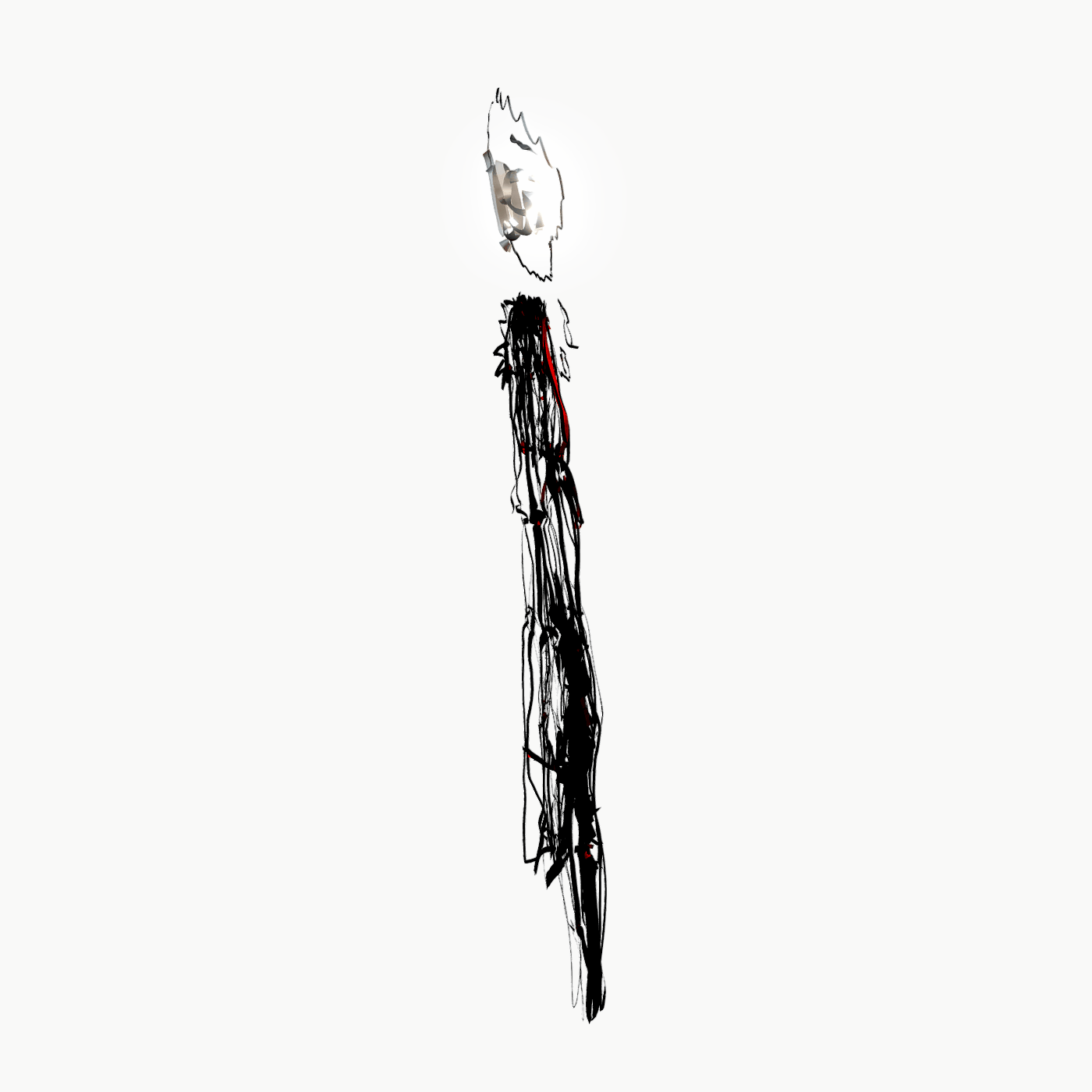NFTs: Digital Curiosity or New Model of Arts Patronage?
How Minnesota artists are working to build digital communities and networks of mutual support in emerging techno-financial spaces
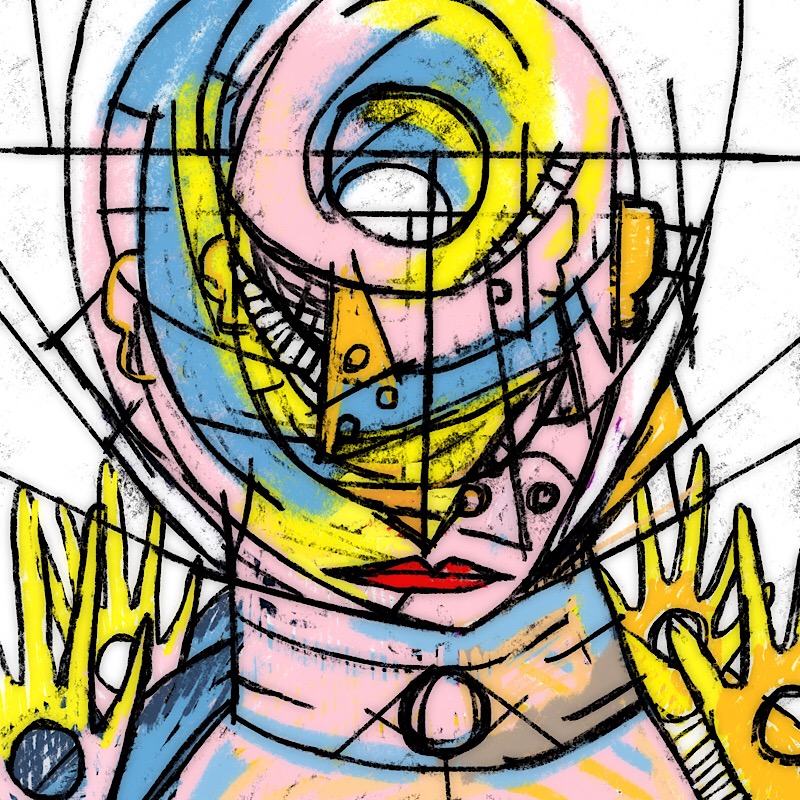
In his seminal 1935 essay, “Art in the Age of Mechanical Reproduction,” Walter Benjamin argued that technology, through quantity and reproducibility, has brought about a fundamental qualitative shift in the relationship between art and consumer:
“[F]or the first time in world history, mechanical reproduction emancipates the work of art from its parasitical dependence on ritual. To an ever greater degree the work of art reproduced becomes the work of art designed for reproducibility. From a photographic negative, for example, one can make any number of prints; to ask for the ‘authentic’ print makes no sense. But the instant the criterion of authenticity ceases to be applicable to artistic production, the total function of art is reversed. Instead of being based on ritual, it begins to be based on another practice—politics.”1
The transformational political role of art, Benjamin argues, is undergirded by the cognitive awareness of novel forms, through “shock,” that mass-consumed art—his focus was on film and photography—exposes the populace to. In a sort of multilateral utopian openness, he argued for the political awakening that the dissolution of the barriers between the artist and the consumer, effected through technology, could bring about.2 While this shift in social relations didn’t come to fruition, with film and photography being as much used for propaganda as for political awareness, the core of Benjamin’s analysis still merits consideration. Perhaps even more so when thinking about the realm of digital art. In this first of the series, I look at what role NFTs—non-fungible tokens that are unique by dint of having ownership recorded on a public digital ledger, with a particular digital asset tied to it—may play in such a shift. I also talk to some Minnesota artists who have waded into this brave new digital world.
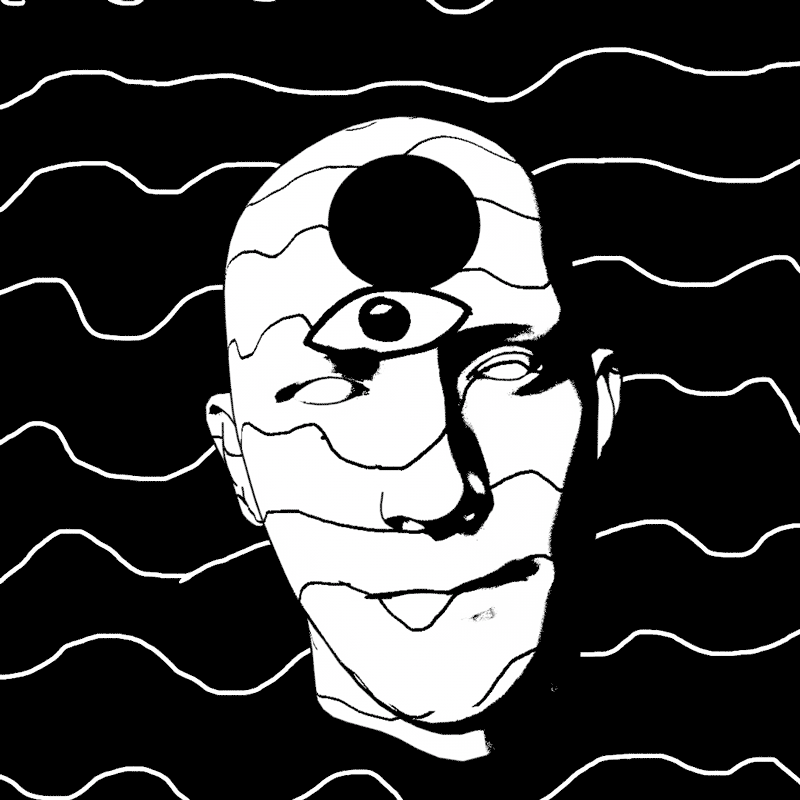
The cloud is the walled garden of plenty, until it isn’t
In the digital spaces that make up an average human life in the developed world, information is abundant, even overwhelming. Our ability to experience the digital world isn’t limited by the available information, but rather by what Nobel laureate Herbert A. Simon, a psychologist and economist, calls human attention, or “the bottleneck of human thought.” He coined the term “attention economy,” sometimes called the “information economy.” Whatever the terminology, scarcity finds its loci in human attention, where Simon noted that “a wealth of information creates a poverty of attention.” For digital artists, this wealth of information has more often than not meant not only a poverty of attention, but also a more literal poverty: the depreciation of monetizing their work.
The dominant model in the digital realm of cultural consumption posits that consumers expect art to be free, or nearly so. After all, there are free online services for just about anything you can imagine. And with a couple mouse clicks, any image can become my desktop background. Our dominant platforms function by monetizing two main resources: consumer data and our attention.
The best illustration of why the current situation is so problematic comes from the realm of music. To earn the equivalent of the federal minimum wage of $7.25 an hour, a musician would need their songs to be streamed, in the best-paid scenario, around 100,000 times per month all the way to the worst-paid of 1.8 million times per month. This is assuming one is an individual artist with no bandmates, no record label, and no publisher with whom to split the revenue. The vast majority of artists earn far, far below the poverty line, around $12 to $15 per month from streaming.
These cloud streaming services are walled gardens that feed on a combination of subscriptions and consumer attention (monetized through advertising) and the labor of musicians, a large majority of whom can’t even come close to making a living off their streaming revenue. It’s a sad and familiar song: huge profits for the streaming services, crumbs for the artists.
Though prominent artists continue the fight for fair pay and equality, this form of digital manorialism will likely remain the dominant model. If we want to stream music from the cloud, we are obligated to participate in the attention economy as well as the exploitation of artistic labor. While we have no practical choices beyond opting out entirely, another cloud model exists, and it rains NFTs.
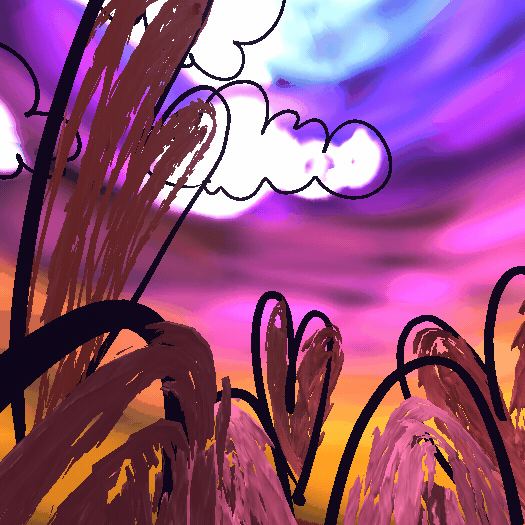
NFTs: Towards a new model of arts patronage
Media coverage of NFTs mainly focuses on the large dollar amounts for this or that NFT. Legitimate concerns center around two poles: whether the phenomenon is a tulip bubble, and the outsized carbon footprint from computing requirements. What is usually not discussed is how NFTs provide an alternative model for arts patronage, as well as a way for individual artists to garner more support for their art, beyond the digital manorialism discussed above. Even if we successfully argue that, yes, it does, the question remains: is it sustainable—both economically and environmentally?
First, the environment. Some artists opt out of the NFT market, citing concerns over the environmental impact of cryptocurrency mining. Crypto mining alone could bring global temperature up over two degrees Celsius in just two decades. 70% of energy usage still comes from non-renewable sources. On the other hand, as renewable energy sources come online, coupled with carbon offsets, proponents of cryptocurrency argue that it’s a net good, especially in the mid- to long-term.3
Second, the economics. Beyond the headline-grabbing outliers, the Beeples and the Banksys, there is no logical reason NFTs can’t retain value like non-digital works of art do. Crypto is fiat currency like any other, with one big exception: its volatility, a weakness derived from one of its main strengths, the lack of a decentralized controlling authority (more on this below.)4
Before NFTs, digital artists could only rely on digital rights management, or DRM, to protect monetization of their art. But due to DRM being always technologically breakable and always copy-able through analog means, such as taking a picture or video of a screen, there is nothing stopping works from being infinitely reproduced.
NFTs solve this conundrum by letting go of the fear of reproduction altogether. This letting go is inherent to both its context and core technology. The incentives and values built into such an environment allow for a fixing of ownership in the digital realm via blockchain technology.
Blockchain is a distributed and transparent permanent transaction ledger.5 So while anyone may copy and paste your NFT or otherwise recreate it, no one else can claim to own it. Instead of managing copyright infringement, NFTs allow for public proof of ownership.6 Additionally, artists garner secondary sales royalties that are baked into virtually all smart contracts.
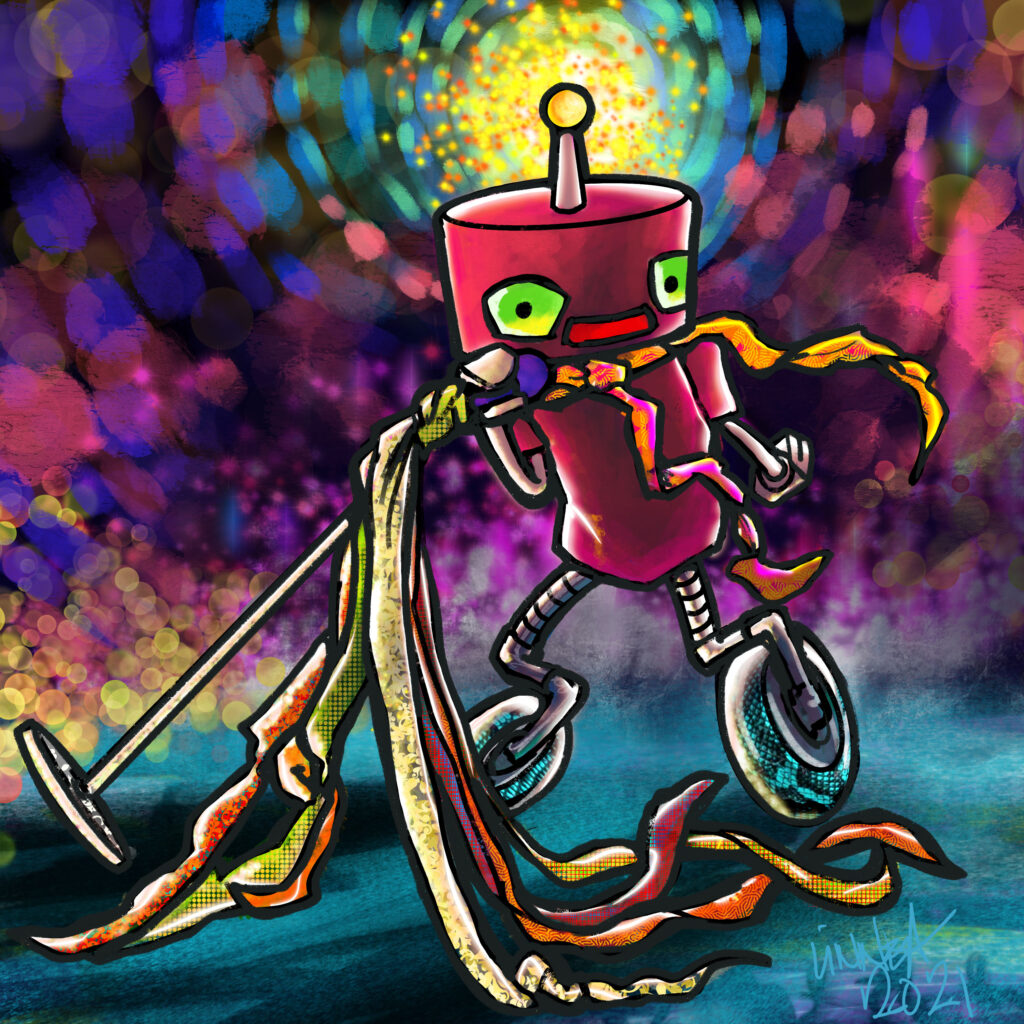
Intimidating, but worth a look
Many artists are justifiably wary of this new space. Ross Auger, a Minneapolis-based artist and musician, shared over Zoom that, “Every friend I had that was an artist was like, ‘This is just a thing for cryptocurrency, it’s a big thing for rich people, but I don’t think it’s for me.’” But seeing how some musicians were using NFTs inspired him to learn more about the practice.
“Diving into this world where you have your own wallet, you’re keeping these assets and these cryptocurrencies, is very intimidating,” admitted Minneapolis-based artist Matt Semke7 over Zoom, adding: “Also getting to understand the lingo of this whole scene is very intimidating.” He cited instances in which artists have been scammed and their digital wallets drained of funds. And despite the intimidation factor and the prevalence of scams, which he noted was not new in the art world nor the sole provenance of the digital world, Semke exhorted: “But I would encourage all artists to at least dip their toes in it, try to wrap their heads around it, because I do see a large future for it.”
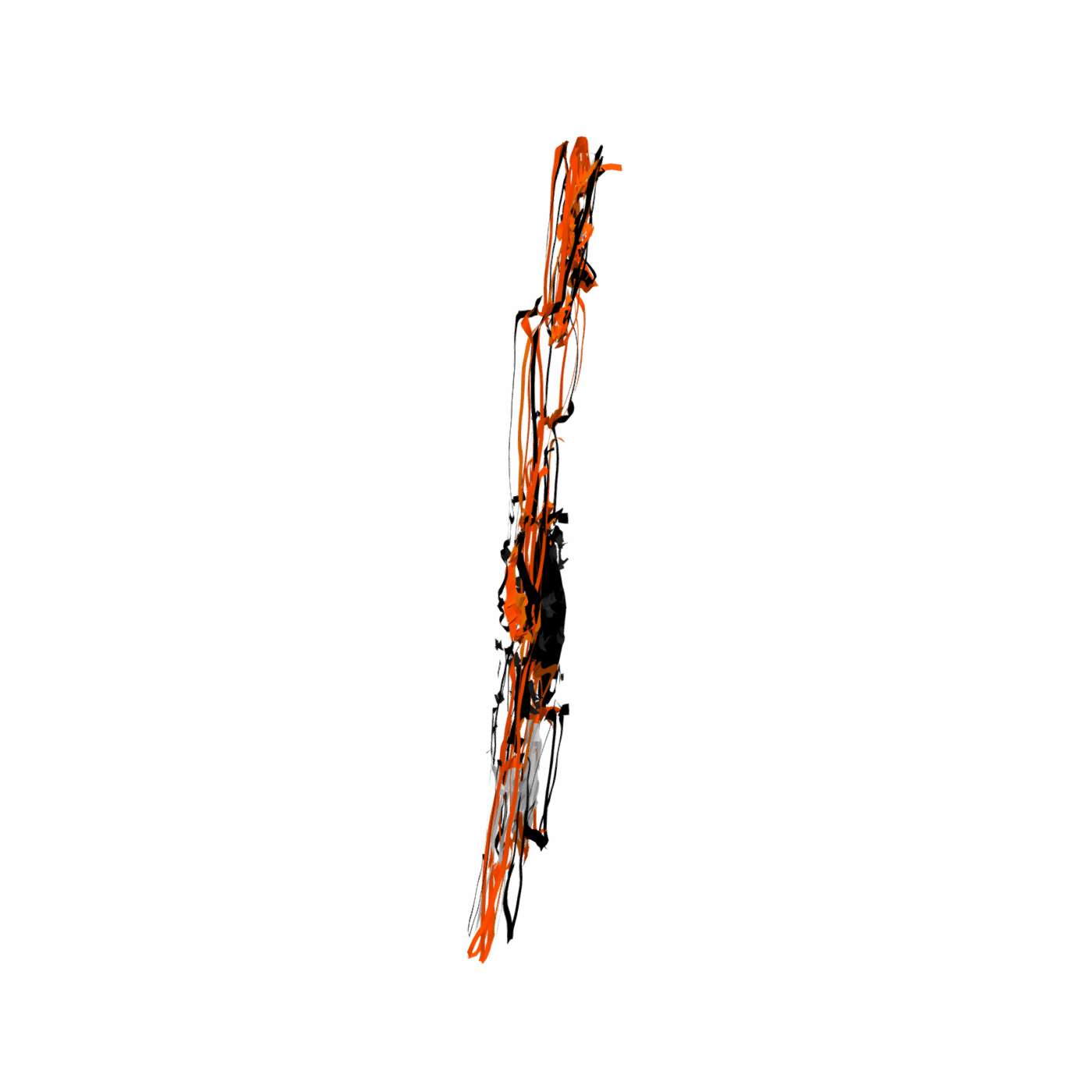
“It doesn’t have to be something you can hold”
The shifting perceptions about the value of a work of digital art composed of inherently reproducible code has, with NFTs, reached a pivotal break. Over Zoom, Minneapolis-based artist Linnea Maas of Inside the Robot related her experience of these digital gradients: “For me it’s [digital media] always been as legitimate as putting paint on a canvas. In exhibiting these digital works, I realize there’s some hesitancy about accepting them as legitimate artwork.” Before the advent of NFTs, when some learned that the artwork Maas had on display was not “original,” but rather resided in a file on her computer, they suddenly lost interest. “I feel like with the crypto revolution, or whatever you call it in the art world now, would allow me to say to this person, ‘Well, no, no, no, this is a print, but if you go here to the OpenSea, you can purchase the “original”,’” said Maas, adding: “It doesn’t have to be something you can hold.”
Semke had similar experiences, saying: “I’ve always had people look at my animated GIFs and say, ‘Hey, how can I buy that?’ I’ve always just shrugged my shoulders. I don’t know, I could maybe give you a TV display with a USB drive plugged in and there you go. But there’s never been a way for me to really give ownership in the way an NFT can. I think it’s really cool and obviously that’s still a [new] way of thinking about ownership. It’s just having this digital ledger that everybody agrees on that people can right-click and save your file. For me, it’s really great because I’ve always been sharing my work on my website, people can come and enjoy that. So this allows me to generate some income off of that while still giving the work away.”
Artists, including the ones above, report that roughly half their NFT buyers treat their purchases much like stocks to trade, ideally at a profit. The other half of buyers resemble more the traditional art buyer, people who are in it for the longer-term investment, art collectors, those with a genuine interest in the art and artist and arts patronage. Interestingly, many buyers prefer the lack of a physical artwork. As Semke related, “Ultimately, some people don’t want anything to do with your physical art, because then it becomes a liability if they’re going to resell it.”

Moving forward by community, education, anti-machismo
During the global pandemic, communities out of necessity moved online. The nascent NFT community, being native to the digital world, likely welcomed many new artists and the generally NFT-curious into their fold during this time. While much of the digital world can be littered with hyperbolic conflict, cynicism, or deserts of indifference, many artists report positive experiences with the NFT world. For Maas, whose entrée into it started early this year, she found it to be a space where “there are a whole bunch of other artists out there, online, in these chat rooms on a daily basis [ready] to help you out.” Contrasting her experience to the traditional art world of gallery exclusivity, she said of the NFT communities she’s been part of: “Just super cool is the really tight-knit community of early adopters, artists who are just interested, newbies, everybody is just kind of cross-pollinating, like ‘Hey, this is a cool opportunity for artists overall, I will help you, I will bring you there.’” In that space, she said, “I feel like I’m [part of] something bigger.”
Perhaps in a move that takes us closer to Benjamin’s multilateral utopian openness, artists note the responsiveness of the NFT world to its community of consumers and artists alike. For example, Semke relates that when some platforms attempted to change the terms of their smart contracts to be less generous to artists by reducing their secondary sales cuts, he said that “the NFT community reacts and says, ‘What are you doing, this is not the way we are going to set up the new art market.’” To date such changes have not taken hold. Auger has a similar take: “I think if the [wider] community keeps saying, ‘Hey, we need less gas prices, we need it to be eco-friendly, we need to be able to visit any of this work on whatever device they have [and transparency]’—the community seems to be pretty good at saying, ‘Okay, we heard you, we’ll work on that.’”
With its new model of digital art ownership, its foreign lingo and start-up platforms, education will play a key role in getting the wider art world to embrace NFTs. Semke is hopeful that trusted guidance is just on the horizon: “There are lots of artists doing great things in that space and trying to help new artists coming in. Right now there’s not a great class you could take that tells you what to look out for, etc., but there’ll be stuff like that that will pop up.” For Auger, the manner and tone in which the NFT community talks, both internally and to the general public, will be key. “I think it’s going to have to be,” he says, “I don’t know—what’s the opposite of machismo?” He elaborated: “I think people are going to have to be honest about how confusing it can be, how helpful it can be [to acknowledge that] we’re still all learning. But I know for a while it was like, ‘You don’t know about crypto? You don’t know about NFTs?’ If we shed that attitude, there will be no denying that this will be the future.”
This space is volatile and all very uncertain, true. But it’s also experimental, in the original sense of the word, based on “experience” (the Latin experimentum, in the sense of “having personal experience,” also “experienced, observed”): experiential, as we are attempting to change our experience of the world, our digital relationships and their real-world consequences.
Like with anything in the human world, things become what they become from the intertwined combination of (1) what we make of them and (2) larger forces beyond our control. Technology has increasingly not only reshaped the face of our planet and the surfaces of our lives, but also some of our most fundamental practices, including art, as more and more of culture moves into the digital realm in this age of post-mechanical reproduction. Purveyors of data and human attention hold great sway over our mental and digital spaces by sheer force of ubiquity, branding, and everyday integration. But how we create value and meaning in our lives and within the greater society (local, regional, global) is still more within our control than not. After all, their technology is our technology; it exists because we use it. We can push for symbiosis instead of exploitation, for a digital space of community-building and mutual support. NFTs can, if structured in such a way as to be environmentally sustainable and economically stable, be one space for that evolving relationship, moving us a little closer to that multilateral utopian theory of art Walter Benjamin dreamed of in the age of mechanical reproduction.
